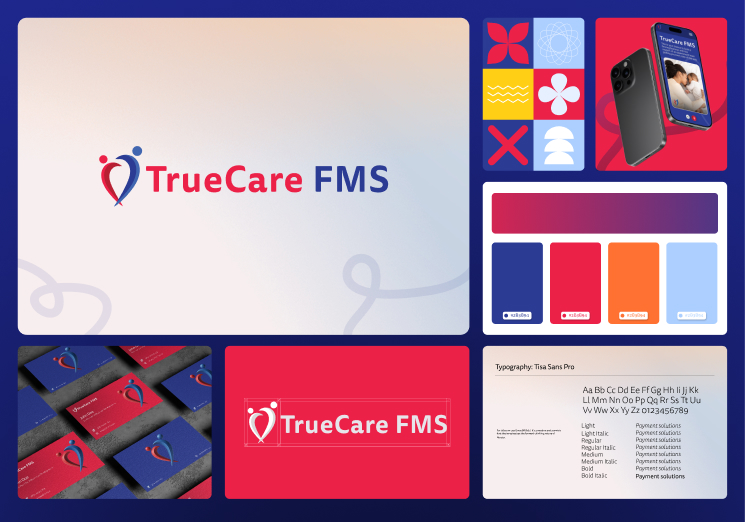Effective Branding: Build Strong Brand Identity

In today's fast-paced and competitive market, effective branding is more crucial than ever before. A strong brand can set your business apart from the competition, build customer loyalty, and drive growth. But what exactly does effective branding entail, and how can you harness its power for your business?
In this comprehensive guide, we'll delve into the essential elements of effective branding strategies, including creating a compelling brand identity, the significance of logo design, and maintaining consistency across all platforms. We'll also explore how to build emotional connections with your audience and leverage branding in marketing.
Before diving into strategies, it's crucial to understand what branding truly means. Branding is more than just a logo or a catchy slogan; it's the entire perception of your company from the customer's viewpoint. It encompasses every interaction a customer has with your business, from the first ad they see to their experience with your product or service.
The Essence of Branding
At its core, branding is the essence of your business's identity. It embodies your company's values, mission, and personality. This is not just about visuals but about creating an experience that resonates with your audience. It's the promise you make to your customers and how you deliver on that promise consistently.
Beyond the Visuals
While visuals play a significant role, branding goes beyond just a logo or color scheme. It's about the emotions and perceptions people associate with your business. A successful brand tells a story, one that customers want to be a part of. It’s crucial for businesses to understand this narrative and how it fits into the lives of their customers.
The Customer's Journey
Branding is intricately linked to the customer's journey. Every touchpoint, whether it's an email, a social media post, or a product interaction, contributes to the brand experience. Understanding and mapping out this journey helps businesses create more meaningful and targeted branding efforts.
Why Branding Matters
Branding is the foundation of your business's identity. It differentiates you from competitors and communicates what makes your company unique. A strong brand serves several vital purposes:
Building Recognition and Trust
A strong brand builds recognition and trust among consumers. When customers can easily identify your brand, they're more likely to remember it. Trust is built over time through consistent delivery of quality and value, which a strong brand helps communicate.
Creating Emotional Connections
Brands that evoke emotions create deeper connections with their audience. These emotional ties can turn customers into loyal advocates. By aligning your brand with the values and desires of your audience, you create a bond that goes beyond transactional relationships.
Supporting Marketing Efforts
A well-defined brand supports and enhances marketing efforts. It provides clarity and direction for marketing campaigns, ensuring consistency across channels. This consistency helps reinforce your message and makes marketing more effective.
Driving Customer Loyalty
Loyalty stems from a positive brand experience. When customers feel valued and understood, they are more likely to return. A strong brand fosters loyalty by consistently meeting or exceeding customer expectations, creating a sense of reliability and trust.

Crafting a Strong Brand Identity
One of the key components of effective branding is a strong brand identity. Your brand identity is the visual and verbal representation of your brand. It includes your logo, color palette, typography, and tone of voice.
The Role of Logo Design
A logo is often the first thing people associate with a brand. It's a visual representation of your company and a critical part of your brand identity.
Simplicity is Key
A well-designed logo should be simple, making it easy to recognize and remember. Simplicity ensures that the logo is versatile and can be used across various mediums without losing its impact.
Versatility Across Mediums
Your logo should be versatile, working well on everything from business cards to billboards. This adaptability ensures that your brand is consistently represented, no matter the medium or context.
Reflecting Core Values
A relevant logo reflects your brand's core values and mission. It should encapsulate what your brand stands for and resonate with your target audience. Investing in professional logo design can significantly enhance brand recognition and establish a strong first impression.
Consistency is Key
Consistency in branding means using the same visual elements and messaging across all platforms. This ensures that customers have a unified experience with your brand, whether they're visiting your website, seeing an ad, or walking into your store.
Developing a Style Guide
Use a style guide to maintain consistency. This comprehensive document outlines how your brand should be presented visually and verbally, including logo usage, color schemes, fonts, and tone of voice. It serves as a reference for anyone creating branded materials.
Training Your Team
Ensure that everyone involved in marketing and communications understands and adheres to the brand guidelines. Training your team on these guidelines is essential for maintaining consistency and ensuring that your brand is represented accurately.
Conducting Regular Audits
Periodically review your branding materials to ensure consistency. Conduct regular audits to identify areas where the brand is not being represented correctly and make updates as needed. This proactive approach helps maintain a cohesive brand image.
The Importance of Typography and Color
Typography and color are integral parts of your brand identity. They convey emotions and can influence perceptions.
Choosing the Right Typography
Typography should align with your brand's personality. Whether it's modern, classic, or playful, the right font can enhance your brand's message and make it more memorable.
The Power of Color
Colors evoke emotions and can have a significant impact on how your brand is perceived. Choose a color palette that reflects your brand values and resonates with your target audience. Consistent use of color helps reinforce brand recognition.
Building Emotional Connections
Effective branding goes beyond visuals; it also involves creating emotional connections with your audience. People tend to buy from brands they feel connected to on a personal level. To build these connections, consider the following strategies:
- Storytelling
- Storytelling is a powerful tool in branding. Sharing your brand's story can create a deeper connection with your audience by humanizing your brand and making it relatable.
- Sharing Your Origins
- The history of your company is a compelling story. Sharing how your brand started, the challenges you faced, and the triumphs you've achieved can create a narrative that resonates with customers.
- Communicating Mission and Values
- Clearly articulating your mission and values helps align your brand with the beliefs of your audience. When customers understand what drives your business, they are more likely to feel connected to it.
- Highlighting Customer Success
- Customer success stories showcase the impact of your products or services. These stories not only validate your brand but also demonstrate how you deliver on your promises, fostering trust and connection.
- Engaging Content
- Content is a great way to engage with your audience and build a community around your brand. Share valuable and relevant content that resonates with your target audience.
- Creating Valuable Content
- Create content that provides value to your audience. This could be in the form of educational blog posts, informative videos, or insightful newsletters. Valuable content positions your brand as an authority in your industry.
Utilizing Social Media
Social media is a powerful platform for engaging with your audience. Use it to share content, interact with followers, and build a community around your brand. Engage in conversations and respond to feedback to foster a sense of community.
Building a Community
Encourage interaction and engagement through your content. Building a community around your brand fosters loyalty and creates a sense of belonging among your audience.
Customer Experience
Providing exceptional customer experience is a crucial part of branding. Every interaction a customer has with your brand should be positive and reflective of your brand values.
Training for Excellence
Train your team to deliver excellent customer service. Ensure that every customer interaction is handled professionally and reflects your brand's commitment to quality and service.
Seeking and Acting on Feedback
Actively seek feedback from your customers to understand their experiences. Use this feedback to make improvements and show customers that you value their input.
Creating Memorable Experiences
Create memorable experiences that leave a lasting impression on your customers. Whether it's through personalized service or thoughtful touches, these experiences strengthen the emotional connection with your brand.
Leveraging Branding in Marketing
A strong brand can significantly enhance your marketing efforts. When customers recognize and trust your brand, they're more likely to engage with your marketing messages. Here's how you can leverage branding in your marketing strategy:
Integrated Marketing Campaigns
Use your brand identity to create cohesive marketing campaigns across different channels. Whether it's social media, email, or print, your campaigns should have a consistent look and feel that aligns with your brand.
Consistency Across Channels
Ensure that your brand is represented consistently across all marketing channels. This consistency reinforces your brand message and helps build trust with your audience.
Tailoring Content to Platforms
While maintaining consistency, tailor your content to suit each platform. Different platforms have unique audiences and dynamics, so adapt your messaging and visuals accordingly.
Measuring Campaign Success
Track the success of your integrated marketing campaigns. Use metrics such as engagement rates, conversions, and brand awareness to assess their impact and make necessary adjustments.
Brand Partnerships
Partnering with other brands can expand your reach and enhance your brand image. Choose partners that share similar values and target audiences to ensure a good fit.
Identifying Strategic Partners
Identify potential partners whose values align with yours and whose audience complements your own. A strategic partnership can enhance your brand's credibility and open new opportunities.
Crafting Collaborative Campaigns
Collaborate with partners to create joint marketing campaigns. These campaigns should leverage the strengths of both brands and provide value to both audiences.
Evaluating Partnership Impact
Evaluate the impact of brand partnerships on your business. Assess metrics such as reach, engagement, and brand perception to determine the success of the collaboration.
Measuring Brand Success
It's important to track the success of your branding efforts to understand their impact and make necessary adjustments.
Assessing Brand Awareness
Conduct surveys and studies to measure how well your brand is known in your target market. Brand awareness is a key indicator of your brand's reach and recognition.
Gauging Brand Perception
Collect customer feedback and reviews to gauge how your brand is perceived. Understanding customer perceptions helps you identify areas for improvement and capitalize on strengths.
Monitoring Customer Loyalty
Track metrics such as repeat purchases and customer retention rates to assess loyalty. High customer loyalty indicates a strong brand connection and satisfaction with your offerings.
Conclusion
Effective branding strategies are vital for establishing a strong market presence and fostering customer loyalty. By building a compelling brand identity, maintaining consistency, creating emotional connections, and leveraging branding in marketing, you can harness the power of branding to drive business success.
Remember, branding is an ongoing process that requires attention and adaptation to stay relevant in an ever-changing market landscape. Investing time and resources into your branding efforts will pay off in the long run, helping your business thrive and grow. Stay committed to your brand vision and continuously seek ways to enhance and evolve your branding strategies to meet the needs of your audience.
.png)



